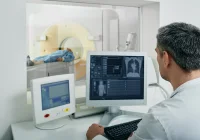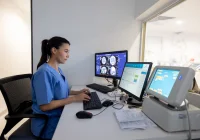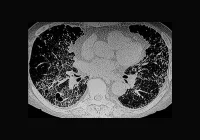In 2024, nearly one million patients across England endured delays of more than a month for their scan results, the worst performance on record. This alarming trend comes despite a dramatic rise in spending on private teleradiology services, which reached €253 million (f216 million) in a single year. The Royal College of Radiologists (RCR) warns that this approach is not only unsustainable but also a misdirection of resources that could be better spent addressing the structural causes of diagnostic delays. As demand for complex imaging continues to rise, the current outsourcing model is proving insufficient to meet both clinical needs and financial sustainability.
Escalating Demand and an Overstretched Workforce
Radiology departments throughout the UK are facing mounting pressures. In 2024 alone, demand for CT and MRI scans increased by 8%, reflecting growing clinical reliance on imaging to support accurate and timely diagnoses. Yet, the workforce has not kept pace. A national shortage of clinical radiologists, estimated at 30%, has left hospitals increasingly dependent on external providers to manage workloads. As a result, 95% of trusts and health boards now outsource some of their radiology reporting to private firms.
Must Read: Technological Solutions to the Radiologist Shortage and Burnout
While this approach offers temporary relief, it fails to resolve the chronic mismatch between demand and capacity. Despite the outsourcing boom, 976,000 scans breached the government’s four-week reporting target last year – a 28% increase over 2023. This includes 434,000 delayed CT and MRI reports, up by over a quarter year-on-year. Particularly hard-hit regions like Cambridgeshire and Peterborough, where 6.9% of scans missed the deadline, highlight how widespread and entrenched these delays have become.
The Soaring Cost of Short-Term Fixes
Outsourcing has become the default solution to the UK’s radiology bottleneck, but it comes at a steep cost. In 2024, the NHS spent €380 million (£325 million) on external support for radiology, with €253 million (£216 million) channelled into private teleradiology companies alone. This marks a 24% increase from the previous year and is more than double the amount spent before the COVID-19 pandemic. At the current trajectory, spending could surpass €468 million (£400 million) annually by 2028.
The RCR argues this spending represents a false economy. Redirecting even a portion of these funds could yield far more impactful, long-term benefits. For example, the estimated €468 million (£400 million) projected for 2028 would be sufficient to employ more than 3,300 full-time consultant radiologists. Instead of continuously investing in short-term fixes, NHS finances could support structural workforce expansion, training programmes and retention strategies that would enhance internal reporting capacity and reduce dependency on external providers.
A Call for Sustainable Investment in Workforce and Technology
Addressing the radiology crisis requires a shift from reactive outsourcing to proactive system strengthening. The RCR has called for a reallocation of funds towards initiatives that build capacity within the NHS. Chief among these is the training of new radiologists to fill workforce gaps and ensure adequate in-house expertise. This approach not only reduces reliance on costly outsourcing but also contributes to a more resilient and self-sufficient health system.
Investment in technology also plays a vital role in increasing reporting efficiency. AI tools designed to support image interpretation can enhance productivity, streamline workflows and reduce turnaround times for scan reporting. With appropriate integration and oversight, these technologies can complement clinical radiologists and ease the burden on overextended teams. Rather than continuing to outsource at scale, a balanced investment in workforce and innovation offers a more sustainable route to timely diagnostics and improved patient outcomes.
The record delays in radiology reporting across England in 2024 underscore a critical need for strategic reform. While private outsourcing has become a widespread solution to immediate challenges, its growing financial and operational burden signals the limits of this model. Redirecting funds towards training, workforce expansion and intelligent technology integration represents a more prudent and sustainable investment. With targeted action and long-term vision, the NHS can build a radiology service that meets rising demand, reduces patient waiting times and restores confidence in diagnostic care.
Source: The Royal College of Radiologists
Image Credit: Freepik










